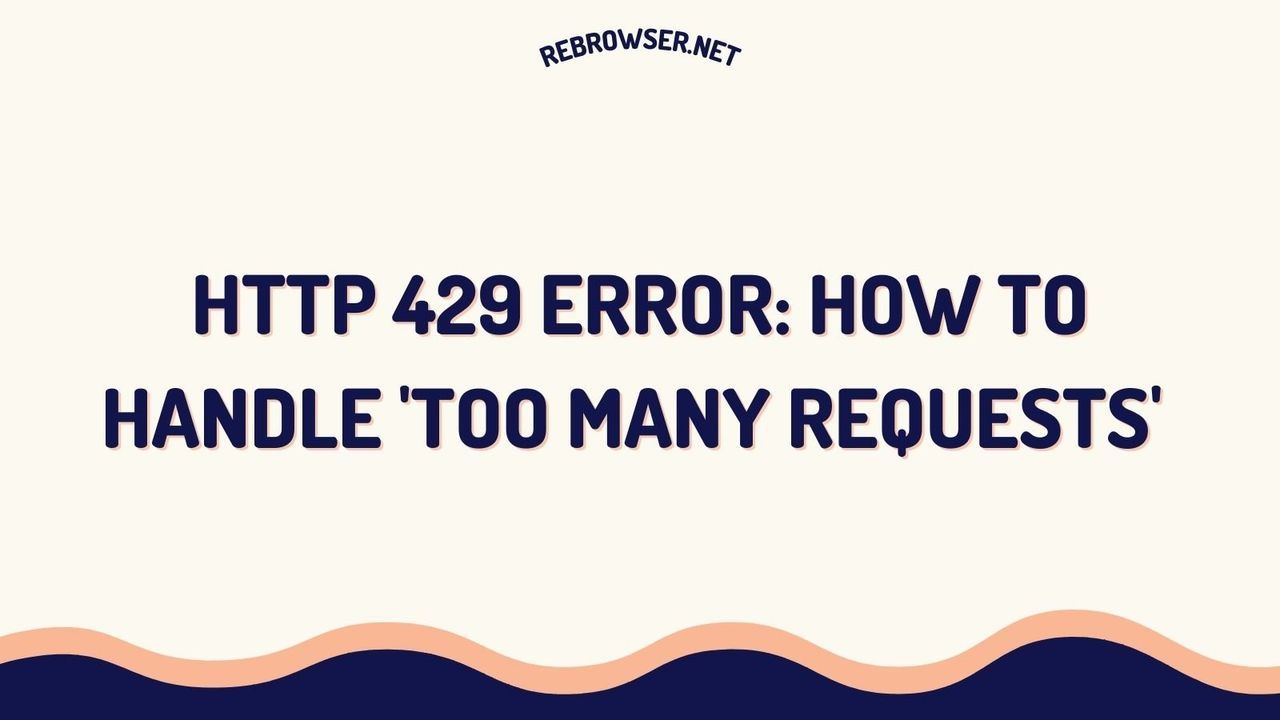Modern Guide to Web Scraping with Ruby: Advanced Techniques and Best Practices for 2025
Key Takeaways
- Ruby offers robust web scraping capabilities through gems like Nokogiri, HTTParty, and Selenium for handling both static and dynamic content
- Modern web scraping requires a multi-faceted approach combining proper request handling, proxy management, and respect for rate limits
- Concurrent scraping techniques can significantly improve performance when dealing with large-scale data collection
- Error handling and data validation are crucial for building reliable scrapers
- Using cloud infrastructure and job queues helps scale scraping operations effectively
Setting Up Your Ruby Scraping Environment

Before diving into web scraping, you'll need to set up your development environment properly. Here's a modern approach to getting started:
Using Ruby Version Manager (RVM)
# Install RVM curl -sSL https://get.rvm.io | bash -s stable # Install Ruby 3.3.0 (latest stable version as of 2024) rvm install 3.3.0 # Create a dedicated gemset for scraping projects rvm use 3.3.0@scraping --create
Essential Gems for Modern Web Scraping
Create a Gemfile with these modern dependencies:
source 'https://rubygems.org' gem 'nokogiri', '~> 1.15.5' # HTML parsing gem 'httparty', '~> 0.21.0' # HTTP client gem 'selenium-webdriver', '~> 4.16' # Browser automation gem 'ferrum', '~> 0.13' # Modern Chrome automation gem 'async-http', '~> 0.60.2' # Async HTTP requests gem 'oj', '~> 3.16' # Fast JSON parsing
Modern Approaches to Web Scraping
1. Intelligent Request Handling
Modern web scraping requires sophisticated request handling to avoid detection and maintain reliability:
require 'httparty'
require 'retriable'
class ModernScraper
include HTTParty
def fetch_with_retry(url)
Retriable.retriable(
tries: 3,
base_interval: 1,
multiplier: 2,
on: [
HTTParty::Error,
Timeout::Error,
Net::OpenTimeout
]
) do
response = self.class.get(
url,
headers: generate_headers,
timeout: 10
)
handle_response(response)
end
end
private
def generate_headers
{
'User-Agent' => random_user_agent,
'Accept' => 'text/html,application/xhtml+xml',
'Accept-Language' => 'en-US,en;q=0.9',
'Accept-Encoding' => 'gzip, deflate',
'Connection' => 'keep-alive'
}
end
end
2. Concurrent Scraping with Modern Ruby Features
Take advantage of Ruby 3.x's improved concurrency features for better performance:
require 'async'
require 'async/http/internet'
require 'async/barrier'
class ConcurrentScraper
def scrape_urls(urls, max_concurrent: 5)
Async do |task|
barrier = Async::Barrier.new
urls.each_slice(max_concurrent) do |url_batch|
url_batch.each do |url|
barrier.async do
response = fetch_url(url)
process_response(response)
end
end
barrier.wait
end
end
end
end
3. Modern HTML Parsing Techniques

Use Nokogiri with modern CSS selectors and performance optimizations:
require 'nokogiri'
require 'oj'
class ContentParser
def parse_html(html)
document = Nokogiri::HTML5.parse(html)
# Use CSS4 selectors for modern browsers
items = document.css('[data-testid="product-card"]')
items.map do |item|
{
title: item.at_css('.title')&.text&.strip,
price: parse_price(item.at_css('.price')),
availability: item.css(':has(.in-stock)').any?
}
end
end
end
Handling Modern Web Challenges
Modern websites implement various anti-scraping mechanisms to protect their content. Building reliable scrapers requires understanding and properly handling these challenges. When encountering blocks or access issues, you'll need to implement proper error handling and retry mechanisms.
require 'ferrum'
class DynamicScraper
def initialize
@browser = Ferrum::Browser.new(
timeout: 20,
window_size: [1366, 768],
browser_options: {
'disable-gpu': true,
'no-sandbox': true
}
)
end
def scrape_dynamic_content(url)
@browser.goto(url)
@browser.network.wait_for_idle
# Wait for specific content to load
@browser.css('.content-loaded').wait
# Extract data after JS execution
content = @browser.css('.dynamic-content').text
content
ensure
@browser.quit
end
end
2. Rate Limiting and Proxy Management
Implement sophisticated rate limiting and proxy rotation:
require 'connection_pool'
class ProxyManager
def initialize(proxies, pool_size: 10)
@proxy_pool = ConnectionPool.new(size: pool_size) do
proxies.cycle
end
end
def with_proxy
@proxy_pool.with do |proxy|
yield proxy
rescue StandardError => e
log_proxy_error(proxy, e)
raise
end
end
end
Real-World Example: E-commerce Price Monitor
Here's a complete example of a modern price monitoring scraper:
class PriceMonitor
include Concurrent::Async
def initialize(urls)
@urls = urls
@browser_pool = BrowserPool.new(size: 5)
@storage = Storage.new
end
def monitor
@urls.each_slice(10) do |batch|
tasks = batch.map { |url| async_scrape(url) }
wait_for_completion(tasks)
sleep 1 # Rate limiting
end
end
private
def async_scrape(url)
Async do
price = fetch_price(url)
store_price(url, price)
rescue StandardError => e
handle_error(url, e)
end
end
def fetch_price(url)
@browser_pool.with do |browser|
browser.visit(url)
browser.css('.price').text
end
end
end
Best Practices for Production Scraping
Monitoring and Maintenance
- Implement comprehensive logging and error tracking
- Set up monitoring for proxy health and success rates
- Use metrics to track scraping performance and reliability
- Implement automatic retries with exponential backoff
Data Quality and Validation
class DataValidator
def validate_product(data)
schema = {
title: ->(v) { v.is_a?(String) && v.length > 0 },
price: ->(v) { v.is_a?(Numeric) && v > 0 },
url: ->(v) { v.match?(URI::regexp) }
}
schema.all? { |key, validator| validator.call(data[key]) }
end
end
Future of Web Scraping with Ruby
As web technologies evolve, Ruby scraping techniques continue to adapt. Here are some emerging trends:
- Integration with AI for intelligent content extraction
- Increased use of headless browsers for JavaScript-heavy sites
- Better handling of anti-bot technologies
- Improved parallel processing capabilities
From the Field: Developer Perspectives on Ruby
Technical discussions across various platforms reveal a nuanced picture of Ruby's position in modern development. While the language may not command the spotlight it enjoyed during its peak in the early 2010s, experienced developers consistently highlight its continued relevance in specific domains. Senior engineers emphasize that Ruby maintains a strong presence in established companies, particularly those valuing developer productivity and code readability. Companies like GitHub, Shopify, and numerous startups continue to use Ruby, especially Ruby on Rails, for their core infrastructure.
The job market for Ruby developers presents an interesting paradox, according to industry practitioners. While there are fewer Ruby positions compared to JavaScript, Python, or Java roles, the demand for experienced Ruby developers often exceeds supply. This scarcity has led to competitive compensation for skilled Ruby developers, though several engineers note that entry-level positions are harder to come by. Teams working with Ruby report that the language's focus on developer happiness and productivity remains a significant advantage, particularly in environments where rapid development and maintainable code are prioritized over raw performance.
Developers with experience across multiple stacks point out that Ruby has evolved beyond its initial reputation. The release of Ruby 3.x and Rails 7 has brought significant performance improvements and modern features like better concurrency support and WebSocket integration through Hotwire. However, some engineers express concern about the ecosystem's growth rate compared to alternatives like Python or Node.js, particularly regarding newer domains like machine learning or serverless computing. The consensus suggests that while Ruby excels in traditional web development scenarios, teams often reach for other tools when dealing with highly specialized use cases or extreme scale.
A recurring theme in developer feedback is Ruby's role in technology education and career development. Many practitioners appreciate Ruby's elegant syntax and focus on readability, making it an effective language for learning object-oriented programming concepts. The Ruby on Rails framework, in particular, receives praise for enforcing consistent patterns and best practices through its "convention over configuration" philosophy. However, some developers argue this same philosophy can become restrictive when projects grow beyond certain complexity thresholds, leading teams to consider alternatives for specific components of their architecture.
The community's overall assessment suggests that Ruby's strength lies not in being the most popular language, but in being the right tool for specific scenarios and team cultures. While it may not be the default choice for new projects in all domains, it maintains a stable and mature ecosystem that continues to evolve and adapt to modern development needs. This perspective challenges the binary "dead vs. alive" debate that often surrounds programming languages, highlighting instead the importance of context and specific use cases in technology choices.
Conclusion
Modern web scraping with Ruby requires a comprehensive approach that combines robust code, intelligent request handling, and scalable infrastructure. By following the techniques and best practices outlined in this guide, you can build reliable scrapers that handle modern web challenges effectively.
For further learning, consider exploring these resources:
Remember to always respect websites' terms of service and implement appropriate rate limiting in your scraping projects.





